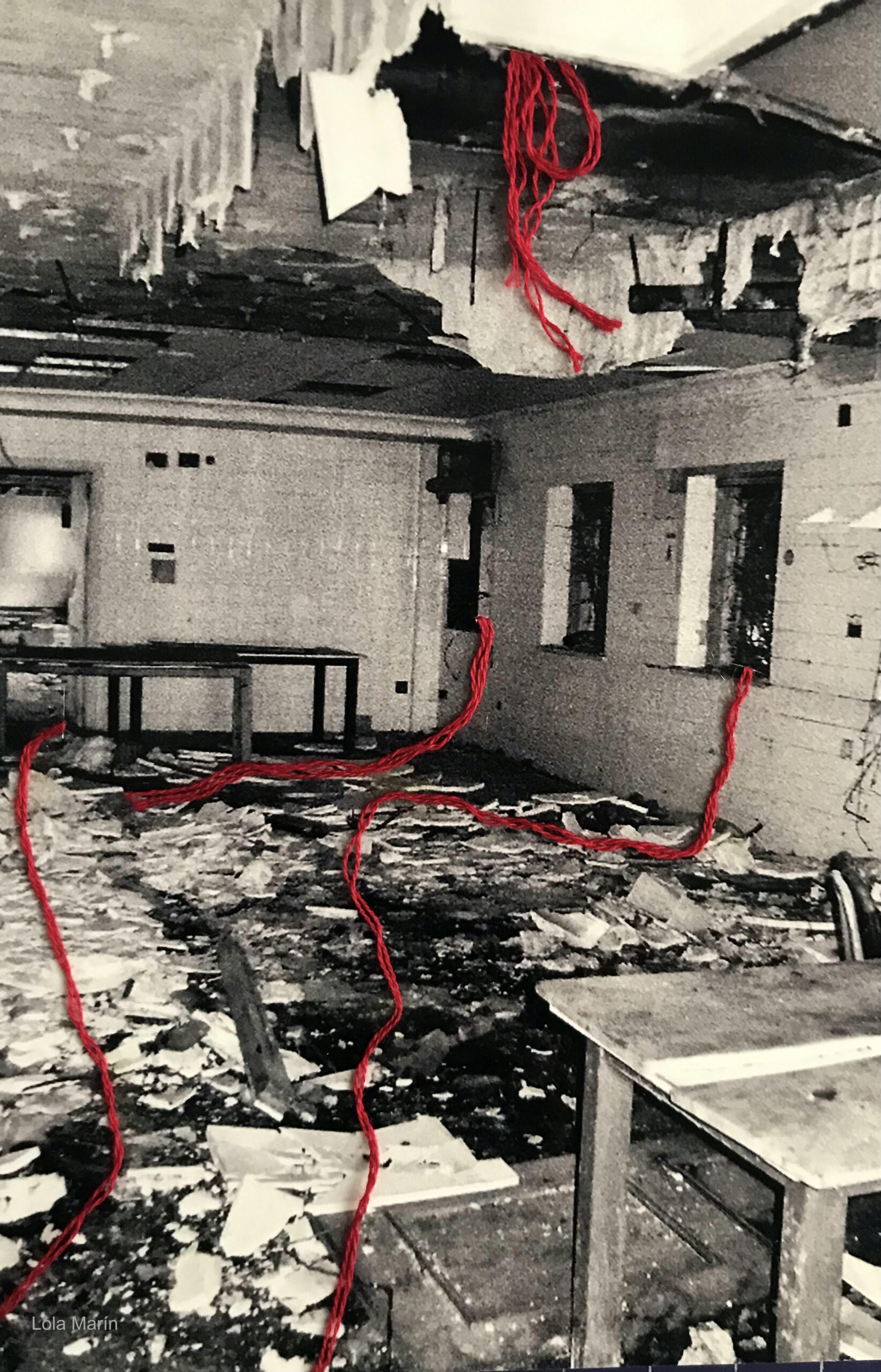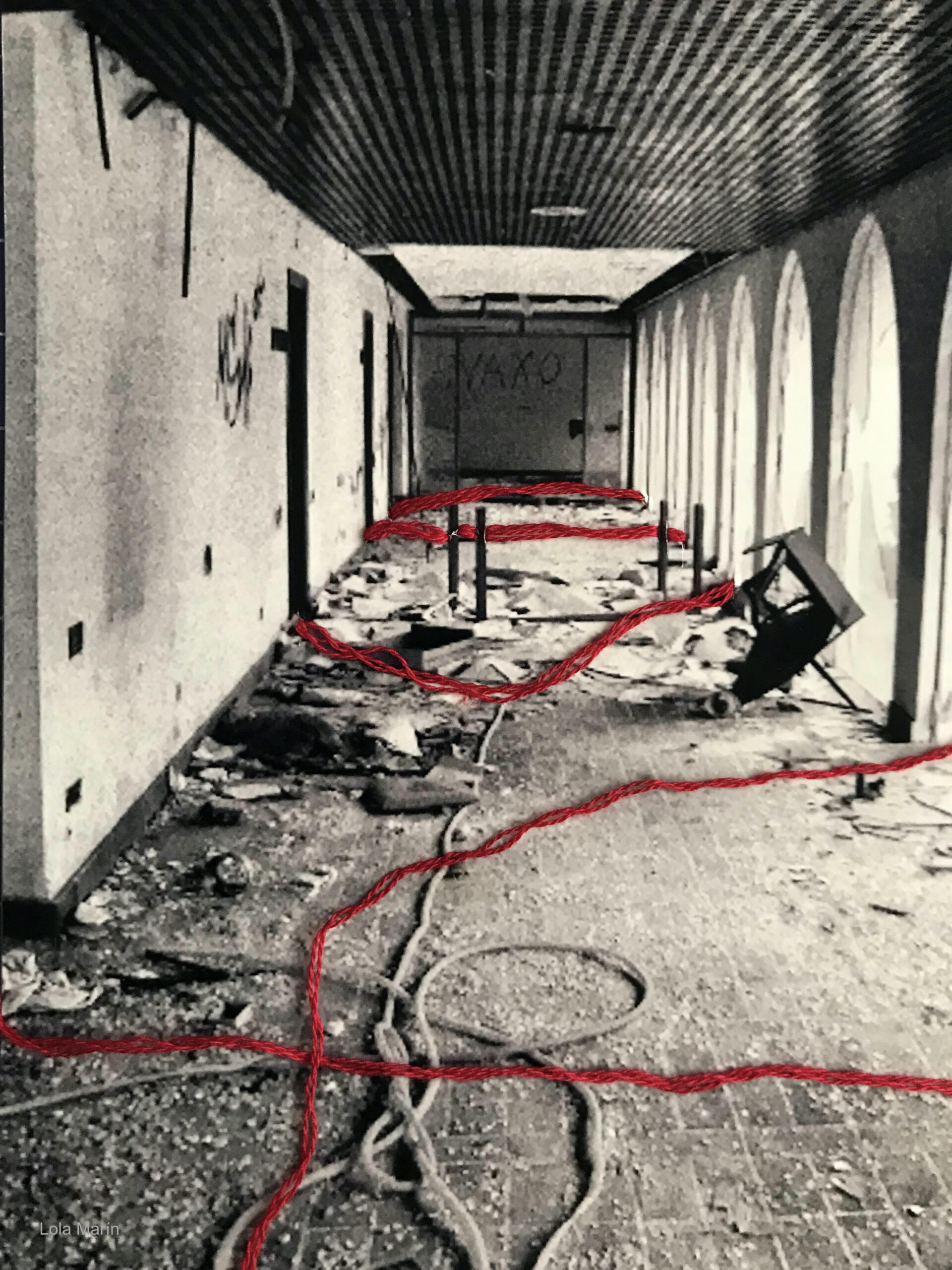As we dive into the meaning of lines, traces, connections, abstractions, and entanglement, I would love to share how I discovered the load of meaning that can be embodied by something so simple as a line, in this case, a red thread.
As part of my anthropological fieldwork among the Puruwa, indigenous inhabitants of the high Andes of Ecuador, at the beginning of the millennium, I was immersed in studying the relationship between textiles and the human body. The Puruwa people wear a very distinct type of clothing, derived from historical lines of ethnic dress, wrapping the body becomes a distinct act of identity-making.
It soon became clear that to understand the relationship between the body and what covers it, we had to start at birth, by looking at the first rituals performed once a new human comes into this world. One of the first acts upon birth includes shimita sirana, the ¨sewing¨ of the mouth. In fact, it is not only the mouth that will be symbolically sewn shut but also the ears. The ritual consists of the midwife, or another important community member, taking a needle and red, woolen, thread, and suggestively making a sewing movement closely over the baby’s mouth. It is believed that by doing so, the mouth is prevented from ¨ speaking evil¨ during the child’s life. Also, the ears are included in the process, where they are ¨sewn¨ close to the scull, both for aesthetic reasons and also to make sure the child will be a good listener.
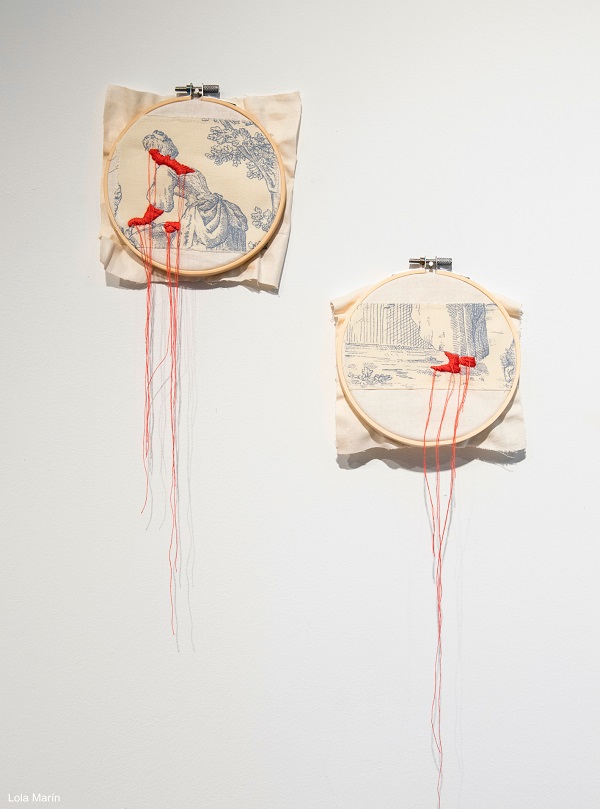
Other customs that are related to birth and the proper development of the child often also include red cloth, textiles or wool (like the tying up of the umbilical cord, the ´tying´ up of the penis, making sure these body parts develop in the best way possible).
What I want to highlight here is how a thin, red thread, can come to carry so much meaning in it, as it comes to represent a boundary between good and bad, and comes to ward off evil, and implies well-being and protection. It was there and then, in Ecuador, that I first became aware of and interested in this human capacity of abstraction and how we symbolically shape our world through our ideas continuously.
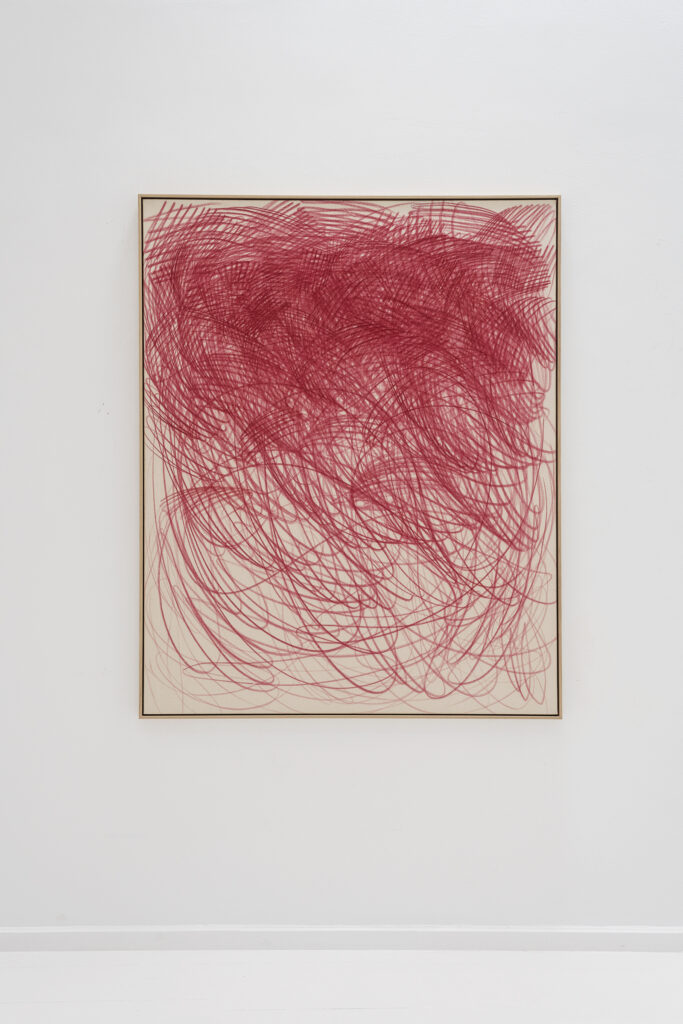
This process of abstraction (from the Latin abs, meaning away from, and trahere , meaning to draw) implies taking away or removing characteristics from something to reduce it to a set of essential characteristics. Essentially, it means that by ´stripping´ something of the context and ideas surrounding it, it can come to mean something new.
The thread, the line, comes to represent a myriad of things, in all its simplicity. It is interesting as well that all over the world, the concept of the red thread is a particularly recurring theme. For example, in Japan, people who are destined to experience something together in life, are connected by a red string that the gods have tied from one pinky finger to the other. This (invisible) line, connecting two people, will make sure they find each other in the turmoil of the world, to do what they are destined to do together. A Japanese legend tells of an old man who lives on the moon and searches for spirits who have something to learn from each other, on Earth. When he finds them, he ties a red thread to them so they find their paths. It means our red strings end in someone else. This metaphor offers solace, in a sometimes harsh world, reminding us that we are connected and that subconsciously, we are guided into the right direction, the one that is unique for us.

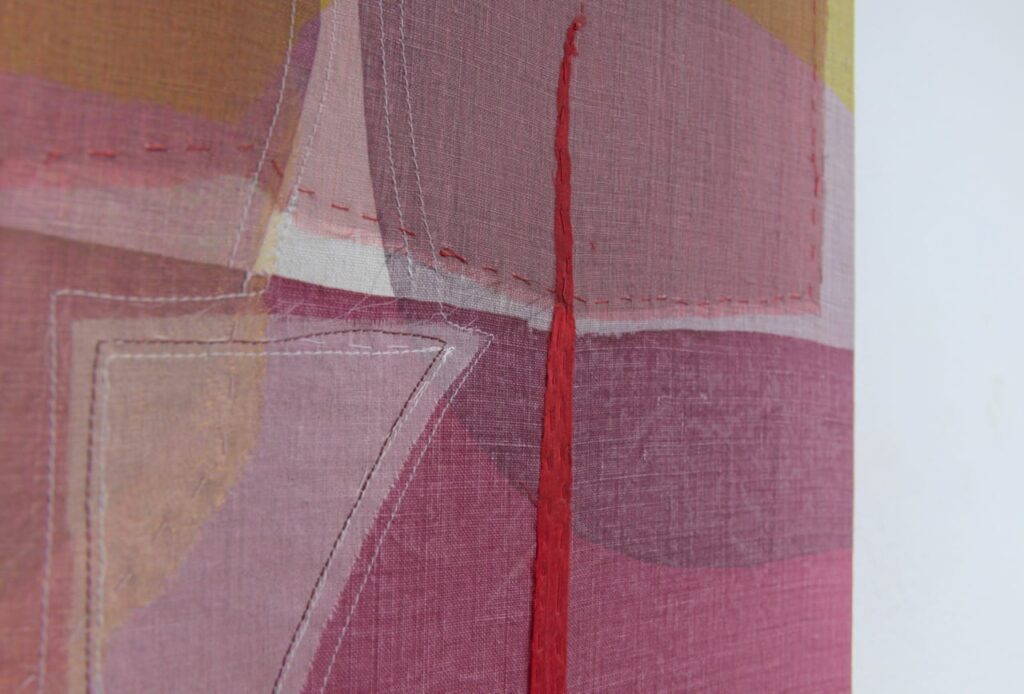
Red threads as important bearers of meaning appear in Jewish history, as well as connecting to heritage and also as protection against the evil eye (Hebrew: עין הרע). The same happens in Macedonia and other Balkan regions, where the red thread bracelets worn in springtime come to stand for prosperity and good fortune.
In the images, I have selected different projects in which the artists have made use of the suggestive power of the red line or thread. Through his gestural work, Aythamy Armas (1977, Spain) creates paintings that through a primordial use of the line invite us to immerse into a landscape, a place, a universe to enter. By being true to a single format, technique and surface, his work alludes to the economy of means as a baseline. Dorothy Wedderburn (1957, Nigeria) uses the red thread as a means of construction, both in her object Restructured and in more recent works, where the layers of fabric are held together by red stitches. Her work is all about building up new meaning out of repurposed elements. Lola Marin (1981, Spain), both in her project Routes: a story from the inside out, and in Gush uses the red thread as an impactful reminder of the dichotomy between inner and outer worlds and how these are constantly enacted through and between each other.
As humans trying to make sense of our existence, the red thread appears across societies as an abstract symbol containing essential values like protection, belonging, and connection. A universe of ideas, myths, and images contained in a continuous red line….
Artist – Lola Marin Work: Routes: a story from the inside out, 2020Description: intervened analogue photography Credits photo: Lola Marin
=======================================================================================================================
Η ΚΟΚΚΙΝΗ ΚΛΩΣΤΗ
Καθώς βυθιζόμαστε στο νόημα των γραμμών, των ιχνών, των συνδέσεων, της αφαίρεσης και της διεμπλοκής, θα ήθελα να μοιραστώ μαζί σας τον τρόπο με τον οποίο εγώ ανακάλυψα το βάρος της σημασίας που μπορεί να ενσαρκωθεί σε κάτι τόσο απλό όσο μια γραμμή, στην προκειμένη περίπτωση, μια κόκκινη κλωστή.
Στο πλαίσιο της ανθρωπολογικής μου επιτόπιας έρευνας μεταξύ των Puruwa, ιθαγενών κατοίκων των Άνδεων του Εκουαδόρ, στις αρχές του 2000, εμβάθυνα στη μελέτη της σχέσης μεταξύ των υφασμάτων και του ανθρώπινου σώματος. Οι Puruwa φορούν έναν πολύ ξεχωριστό τύπο ενδυμασίας, που προέρχεται από ιστορικές γραμμές της εθνικής τους ενδυμασίας, όπου το τύλιγμα του σώματος γίνεται μια ξεχωριστή πράξη δημιουργίας ταυτότητας.
Σύντομα κατάλαβα ότι για να κατανοήσουμε τη σχέση μεταξύ του σώματος και αυτού που το καλύπτει, έπρεπε να ξεκινήσουμε από τη γέννηση, εξετάζοντας τις πρώτες τελετουργίες που γίνονται μόλις ένας άνθρωπος έρθει στον κόσμο. Μια από αυτές λοιπόν είναι και το shimita sirana, το “ράψιμο” του στόματος. Στην πραγματικότητα, δεν είναι μόνο το στόμα που ράβεται συμβολικά, αλλά και τα αυτιά. Το τελετουργικό συνίσταται στο ότι η μαία, ή κάποιο άλλο σημαντικό μέλος της κοινότητας, παίρνει μια βελόνα και μια κόκκινη, μάλλινη, κλωστή και κάνει συμβολικά μια κίνηση ραψίματος κοντά στο στόμα του μωρού. Πιστεύεται ότι με αυτόν τον τρόπο, το στόμα εμποδίζεται από το να «λέει κακά λόγια» κατά τη διάρκεια της ζωής του παιδιού. Με ανάλογο τρόπο, τα αυτιά «ράβονται» κοντά στο κρανίο, τόσο για αισθητικούς λόγους όσο και για να διασφαλιστεί ότι το παιδί θα είναι καλός ακροατής.
Άλλα έθιμα που σχετίζονται με τη γέννηση και τη σωστή ανάπτυξη του παιδιού συχνά περιλαμβάνουν επίσης κόκκινο ύφασμα ή μαλλί (όπως το «δέσιμο» του ομφάλιου λώρου ή το «δέσιμο» του πέους, διασφαλίζοντας ότι αυτά τα μέρη του σώματος θα αναπτυχθούν με τον καλύτερο δυνατό τρόπο).

Αυτό που θέλω να επισημάνω εδώ είναι πώς μια λεπτή, κόκκινη κλωστή μπορεί να έχει τόσο μεγάλη σημασία, καθώς αντιπροσωπεύει το όριο μεταξύ καλού και κακού, απομακρύνει το κακό διασφαλίζοντας ευημερία και προστασία. Ήταν τότε λοιπόν, εκεί στο Εκουαδόρ, που συνειδητοποίησα για πρώτη φορά και ενδιαφέρθηκα για αυτή την ανθρώπινη ικανότητα της αφαίρεσης και για το πώς διαμορφώνουμε συνεχώς τον κόσμο μας συμβολικά μέσω των ιδεών μας.
Αυτή η διαδικασία της αφαίρεσης (abstraction), (από το λατινικό abs, που σημαίνει μακριά από, και trahere , που σημαίνει σχεδιάζω) συνεπάγεται την απομάκρυνση ή την αφαίρεση χαρακτηριστικών από κάτι για να το περιορίσουμε σε ένα σύνολο βασικών χαρακτηριστικών. Ουσιαστικά, σημαίνει πως «αφαιρώντας» κάτι από το πλαίσιο και τις ιδέες που το περιβάλλουν, αυτό μπορεί αποκτήσει ένα καινούργιο νόημα.

Η κλωστή, η γραμμή, αναπαριστά μια πληθώρα πραγμάτων, σε όλη της την απλότητα. Είναι επίσης ενδιαφέρον ότι σε όλο τον κόσμο, η έννοια της κόκκινης κλωστής είναι ένα ιδιαίτερα επαναλαμβανόμενο θέμα. Για παράδειγμα, στην Ιαπωνία, οι άνθρωποι που είναι προορισμένοι να ζήσουν κάτι μαζί στη ζωή, συνδέονται με μια κόκκινη κλωστή που οι θεοί έχουν δέσει από το ένα μικρό δάχτυλο του χεριού τους στο άλλο. Αυτή η (αόρατη) γραμμή, που συνδέει δύο ανθρώπους, θα διασφαλίσει ότι θα βρουν ο ένας τον άλλον μέσα στην αναταραχή του κόσμου, για να κάνουν αυτό που είναι προορισμένοι να κάνουν μαζί. Ένας ιαπωνικός θρύλος λέει για έναν γέρο που ζει στο φεγγάρι και αναζητά πνεύματα που έχουν κάτι να μάθουν ο ένας από τον άλλο, στη Γη. Όταν τα βρίσκει, τους δένει μια κόκκινη κλωστή για να βρουν το δρόμο τους. Αυτό σημαίνει ότι οι δικές μας κόκκινες κλωστές καταλήγουν σε κάποιον άλλον. Αυτή η μεταφορά προσφέρει παρηγοριά, σε έναν μερικές φορές σκληρό κόσμο, υπενθυμίζοντάς μας ότι είμαστε συνδεδεμένοι ο ένας με τον άλλο και ότι υποσυνείδητα, οδηγούμαστε στη σωστή κατεύθυνση, τη μοναδική για εμάς.


Οι κόκκινες κλωστές ως σημαντικοί φορείς νοήματος εμφανίζονται στην εβραϊκή ιστορία, καθώς συνδέονται με την κληρονομιά αλλά και ως προστασία από το κακό μάτι (εβραϊκά: עין הרע). Το ίδιο συμβαίνει στη Μακεδονία και σε άλλες βαλκανικές περιοχές, όπου τα βραχιόλια με κόκκινη κλωστή που φοριούνται την άνοιξη έρχονται να συμβολίσουν την ευημερία και την καλή τύχη.
Στις εικόνες έχω επιλέξει διάφορα έργα στα οποία οι καλλιτέχνες έχουν χρησιμοποιήσει την υποβλητική δύναμη της κόκκινης γραμμής ή κλωστής. Μέσα από το χειρονομιακό του έργο, ο Aythamy Armas (1977, Ισπανία) δημιουργεί πίνακες που μέσω μιας αρχέγονης χρήσης της γραμμής μας προσκαλούν να βυθιστούμε σε ένα τοπίο, έναν τόπο, ένα σύμπαν στο οποίο πρέπει να μπούμε. Μένοντας πιστός σε ένα ενιαίο σχήμα, τεχνική και επιφάνεια, το έργο του παραπέμπει στην οικονομία των μέσων ως βάση. Η Dorothy Wedderburn (1957, Νιγηρία) χρησιμοποιεί την κόκκινη κλωστή ως μέσο κατασκευής, τόσο στο αντικείμενό της Restructured όσο και σε πιο πρόσφατα έργα της, όπου τα στρώματα υφάσματος συγκρατούνται από κόκκινες βελονιές. Το έργο της έχει να κάνει με την οικοδόμηση νέου νοήματος από επαναχρησιμοποιημένα στοιχεία. Η Lola Marin (1981, Ισπανία), τόσο στο έργο της Routes: μια ιστορία από μέσα προς τα έξω, όσο και στο Gush, χρησιμοποιεί την κόκκινη κλωστή ως μια ουσιαστική υπενθύμιση της διχοτόμησης μεταξύ του εσωτερικού και του εξωτερικού κόσμου και του τρόπου με τον οποίο αυτοί ενεργοποιούνται συνεχώς διαμέσου ο ένας του άλλου, αλλά και μεταξύ τους.
Όσο οι άνθρωποι που προσπαθούμε να κατανοήσουμε την ύπαρξή μας, η κόκκινη κλωστή εμφανίζεται σε όλες τις κοινωνίες ως αφηρημένο σύμβολο που όμως περιέχει βασικές αξίες όπως η προστασία, το ανήκειν και η σύνδεση. Ένα σύμπαν ιδεών, μύθων και εικόνων που περιέχονται σε μια συνεχή κόκκινη γραμμή….
Artist – Lola Marin Work: Routes: a story from the inside out, 2020Description: intervened analogue photography Credits photo: Lola Marin

